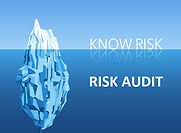The Assignment
A mid-level investing bank needed to implement a stress testing framework in accordance with guidelines issued by the central bank.
Our mandate was to develop a collaborative, auditable, repeatable, and transparent stress testing program to meet regulatory expectations, inform on the bank’s risk appetite framework, and improve strategic business decisions.
Our Solution
The solution included the following key features:
1. Stress testing
Our stress testing framework comprised of regular stress tests and scenario analysis with severe macroeconomic global downturn scenarios. We included all material risk types into our stress testing exercises which included portfolio- and country-specific stress tests.
2. ICAAP
Capital plan stress testing was performed to assess the viability of the capital plan in adverse circumstances and to demonstrate a clear link between risk appetite, business strategy, capital plan and stress testing.
3. Scenario Analysis
The stress test framework also consisted of defined macroeconomic downturn scenarios which were based on quantitative models and expert judgments, economic parameters such as foreign exchange rates, interest rates, GDP growth or unemployment rates.
4. Reverse Stress Testing
Reverse stress test were to be performed annually in order to determine the severity of scenarios that would cause the bank to become unviable.
5. Risk Reporting and Measurement
The stress testing framework supported regulatory reporting and external disclosures, as well as internal management reporting, to be presented to senior management as well as to the risk committees, who are responsible for risk and capital management.
Key Takeaways for the Client
A robust stress testing framework that integrated governance, documentation, data quality management, economic scenario development, loss modeling, forecasting, and reporting and incorporated participation of all stakeholders across business units.
The framework was integrated across asset classes and lines of business and enhanced risk management and was customized to the unique strategies and risks of the bank’s portfolio
INTERNATIONAL PARTNERS
NEW YORK & INDIA

How we performed a Treasury RISK Audit
The Assignment
Our client, a bank in Saudi Arabia, retained our consulting services for a Risk Audit of its Treasury.
Our Solution
Our team supplemented the existing internal audit team of the bank and helped them to better understand the risk exposures, assess the governance, risk management and internal control structures. The team aimed to discover whether the treasury was performing the roles it should be and whether it is operating within the parameters set by the treasury policy.
The audit was focused on:
A. Risk Management
We assessed whether the risk modelling systems were functional and implemented properly. These included
• Value-At-Risk
• Back testing
• Stress Testing
• Scenario Analysis
• Contingency planning.
B. Segregation of Duties.
Our team assessed if all the activities of the treasury were sufficiently segregated, particularly those between the initiation and the confirmation of deals. It was also checked if there was too much reliance on certain individuals within treasury.
C. Documentation
Our team checked if all the relevant documentation was in place and fully up to date.
D. Systems Security and Use
We assessed the security of the systems – particularly the electronic banking and treasury management systems – and whether sufficient controls were in place. We also whether the procedures for the use of these systems were sufficiently detailed and whether the staff followed them. We also looked into if the treasury needed.
Key Takeaways for the Client
An assessment report was provided to the bank with an independent view of the functioning of the treasury. The report identified the problems in the functioning of the treasury with recommendations for improvements and prevent costly mistakes that could result in disputes and litigation.
